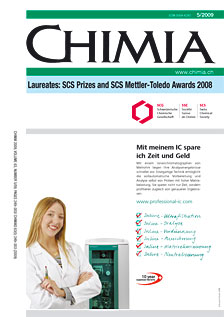Recent Advances in Nonviral Gene Transfection – A Decade of Research into Poly-(?-amino esters)
DOI:
https://doi.org/10.2533/chimia.2009.288Keywords:
Cationic lipids, Cationic polymers, Gene therapy, Nonviral gene transfection, Rna interferenceAbstract
The conjugate addition of an amine into a bis-acrylate leads to a linear poly(?-amino ester). The ease of the reaction and the availability of a wide variety of starting materials, allows the synthesis of large, chemically diverse libraries. Poly(?-amino esters) condense negatively charged plasmid DNA into nanoparticles that may introduce exogenous genetic information into target cells. After several optimization steps, poly(?-amino esters) were found that transfect cells as efficiently as an adenovirus. The concept of conjugate addition was also expanded to the synthesis of lipids. These 'lipidoids' were able to efficiently transport small interfering RNA into cells to enable RNA interference therapy in nonhuman primates.Downloads
Published
2009-05-27
Issue
Section
Scientific Articles
License
Copyright (c) 2009 Swiss Chemical Society

This work is licensed under a Creative Commons Attribution-NonCommercial 4.0 International License.
How to Cite
[1]
Chimia 2009, 63, 288, DOI: 10.2533/chimia.2009.288.







